


Thysdrus (El Jem nowadays) was founded in 46 B.C. on the site of a former Punic village. In the third century AD it even aspired to be the second (after Carthage) most important city of the Roman province of Africa. This is when, probably in 230–238 AD, on Gordian’s initiative (who was a Consul of that province), an amphitheatre was erected being inferior in height only to the Roman Coliseum and other famous arena located in Capua on which Spartacus was fighting battles. It is 149 metres long, 124 metres wide and 36 metres high, and could seat 30 thousand people during the Olympics!
It is not known whether the amphitheatre was completed or not because in 238 AD there was an uprising in Africa that was sparked off due to the high taxes during the rule of a Roman Emperor Maximinus Thrax. Gordian II, the son of Gordian, was killed during the battle and Gordian himself, who was the Emperor for about 20 days at the time of the uprising, committed suicide.
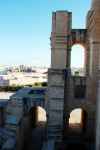

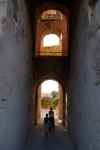

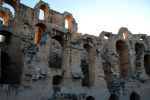

In spite of many years that went by and much historical turmoil, the amphitheatre stood the test of time, let alone the fact it is the best preserved structure of its kind in the world! That was the reason why the pictures for the Gladiator movie were shot here. I also noticed that in many places the amphitheatre in El Djem is called the Colosseum, whereas the Colosseum is the proper noun that was given in the Middle Ages to the amphitheatre in Rome.
You can take a walk across the arena, climb the auditorium and go down to the basements where once there were rooms for animals and gladiators. From this place, by means of the lifts, they were taken up to the arena so that they could, in some cases for the last time, shout: morituri te salutant!
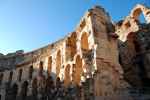

Kairouan is the oldest Arabic city in Tunisia and the fourth (after Mecca, Medina and Jerusalem) most important city of Islam. During the Arabic conquest in around 670 AD, the army moving westwards stopped here for a period of time. Some soldier found a chalice which the commander Okba Ibn Nafi recognized as a chalice that was lost in Mecca. I am not sure but I heard that it was not some ordinary chalice but the legendary Holy Grail. Okba Ibn Nafi decided to found a post here in order to protect caravans against Christians from the north and Berbers from the south (Arabic name kairuwân means a place where a caravan stops during a journey).

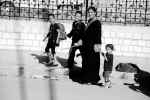
A mosque that was built here did not escape destruction and a new one was erected on its site in 836 AD. A part of building materials was taken from the El Djem amphitheatre and 414 columns come from different Roman structures situated on the territory of Africa. A legend goes that anyone who counts all these columns will go blind.
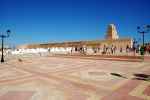
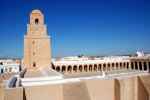




The minaret is 100 years older than the mosque. It is probably the oldest minaret in the world; it was built in around 730 AD. In front of the mosque, there is a small, worthy of note Ouled Farhane cemetery with the whitewashed gravestones.